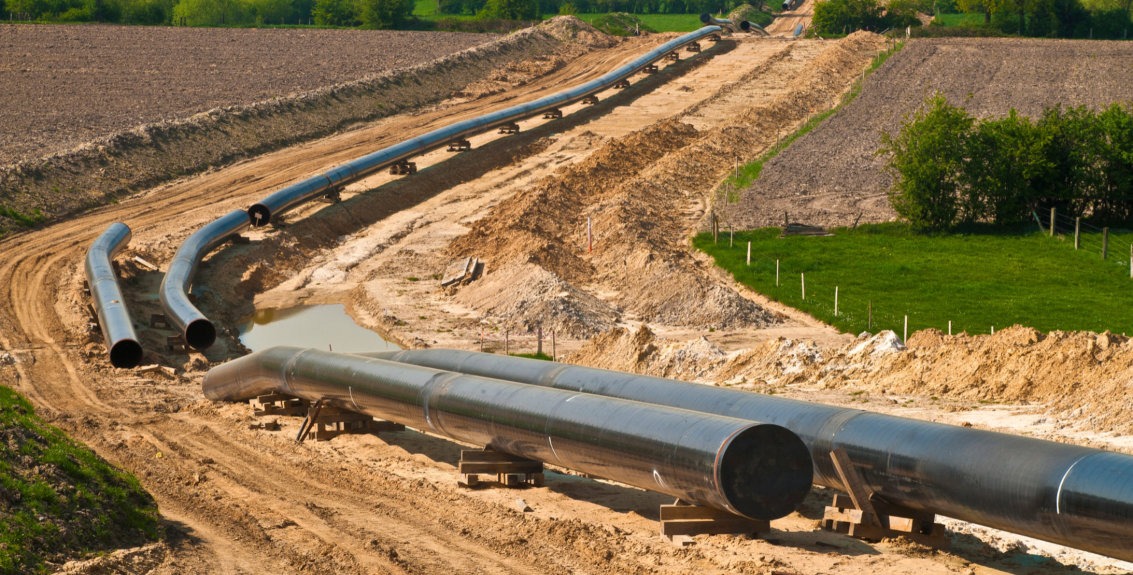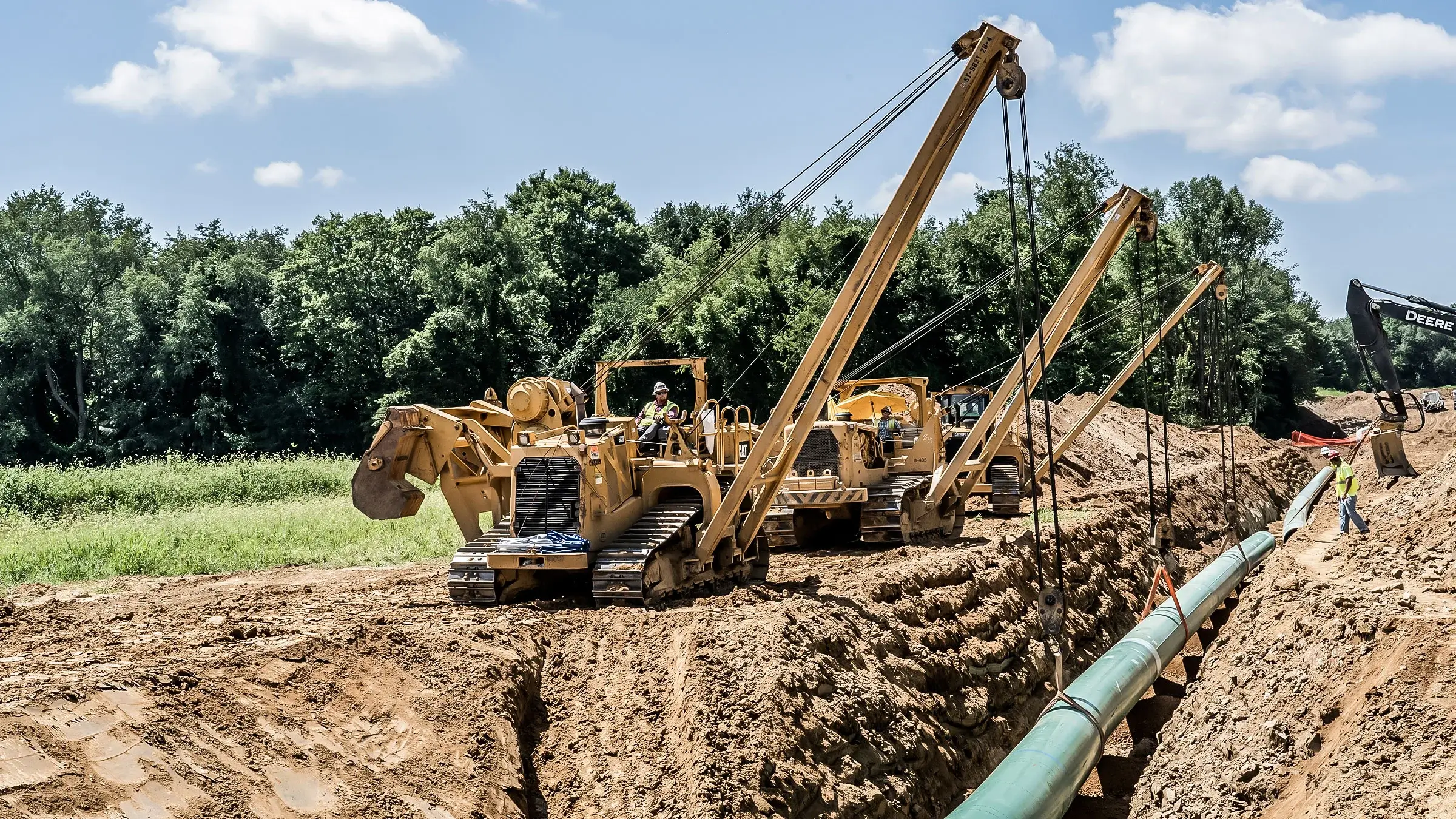Step-by-Step Guide to Successful Creek Pipe pipeline construction
Wiki Article
The Importance of Pipeline Construction: Checking Out the Providers Used in the Sector
Pipeline construction is a vital part of contemporary infrastructure. It facilitates the transport of necessary sources like oil, gas, and water. The sector encompasses numerous solutions, consisting of planning, website preparation, and installment. Each phase calls for accuracy and adherence to security criteria. As areas rely on these systems for their source of incomes, recognizing the complexities of pipeline construction reveals its value and prospective challenges. What elements affect the success of these projects?Introduction of Pipeline Construction Solutions
Pipeline construction solutions encompass a series of specialized tasks designed to assist in the setup of pipes for delivering numerous materials, consisting of oil, gas, and water. These solutions normally include site preparation, excavation, installation of pipe sectors, and backfilling. Skilled labor and innovative equipment are fundamental for assuring each stage is carried out with precision and safety.Safety protocols are vital, as these jobs typically involve working with harmful products and in difficult environments. Quality control steps establish that the pipes fulfill industry criteria and regulations. Additionally, the services might include trenchless modern technology, which minimizes surface area disruption.Environmental considerations play a considerable role in pipeline construction, requiring evaluations and reductions to shield bordering environments. In general, pipeline construction services are necessary for developing the framework essential for power and water circulation, supporting both financial growth and societal demands.Preparation and Style in Pipeline Projects
Effective planning and design are essential elements of successful pipe projects, ensuring that all facets are meticulously resolved prior to construction starts. This phase entails complete feasibility research studies that assess the technical, financial, and environmental factors affecting the task. Designers and designers collaborate to develop in-depth plans that detail the pipe course, products, and construction methods, lining up with regulatory needs and sector standards.Advanced software application and modeling techniques are typically used to replicate various situations, maximizing the design for performance and safety. Environmental effect assessments are conducted to mitigate potential damage to communities and neighborhoods, mirroring a commitment to lasting methods. Furthermore, stakeholder interaction is important, fostering communication and dealing with worries from impacted events. Ultimately, reliable preparation and style set the structure for a pipe job, decreasing risks and making sure a streamlined construction process, inevitably contributing to the general success of the procedure.Website Preparation and Excavation
Complete website preparation and excavation are vital actions in the pipe construction procedure. This stage entails a thorough assessment of the land where the pipeline will be set up. Task teams carry out studies to determine soil types, topography, and existing utility lines to ensure a secure and effective excavation. Correct website preparation decreases environmental effect and facilitates smoother construction operations.Excavation follows, where hefty equipment is utilized to eliminate dirt and rock, developing a trench that meets the defined deepness and size for the pipeline. This procedure needs to stick to safety laws and ecological standards to avoid damages to bordering ecosystems.Additionally, erosion control steps are executed to maintain the website during and after excavation. Efficient site preparation and excavation add substantially to the general success of pipe jobs, laying a strong structure for the subsequent stages of construction.Pipeline Installation Methods
Pipeline installation methods are important for the successful implementation of infrastructure projects. Two famous methods include trenchless modern technology, which reduces surface disruption, and the open-cut excavation process, understood for its simple strategy. Each strategy uses distinct benefits and factors to consider depending upon project needs and ecological variables.Trenchless Modern Technology Techniques
While typical methods of pipeline installment usually include substantial excavation, trenchless innovation approaches provide a more effective and environmentally pleasant alternative. These ingenious techniques, such as straight directional boring and pipe bursting, minimize surface area disturbance by enabling for the installation of pipes without comprehensive excavating. This not only minimizes the environmental impact yet additionally substantially cuts down on labor and repair prices. Trenchless methods facilitate the setup of pipes in metropolitan locations where standard excavation would be not practical or damaging to existing infrastructure. Additionally, these strategies can accommodate different dirt kinds and problems, making them flexible remedies for pipeline construction. Inevitably, trenchless modern technology stands for a significant innovation in the pipe sector, advertising sustainability and functional performance.
Open-Cut Excavation Process
Open-cut excavation remains a fundamental method in pipeline setup, defined by the straight excavation of a trench to lay pipes. This approach includes getting rid of soil and other materials to develop a trench of enough deepness and size, permitting the positioning of pipelines at the called for grade. Open-cut excavation is commonly preferred for its cost-effectiveness and simpleness, specifically in locations with stable dirt problems. It can interrupt surface activities Creek Pipe near me and calls for cautious planning to handle web traffic and environmental influences. Security procedures have to be carried out to shield employees and neighboring framework during the excavation procedure. In general, while open-cut excavation may not appropriate for all terrains, it remains a widely made use of approach in pipeline construction.Checking and Quality Control
Testing and top quality guarantee are vital elements in pipe construction, making certain that installments fulfill recognized security requirements and efficiency demands. Numerous evaluation techniques and techniques are used to examine material top quality and adherence to regulative compliance. This systematic approach assists determine prospective problems prior to they escalate, guarding the honesty of the pipeline system.
Evaluation Techniques and Techniques
Assessment techniques and approaches are necessary elements in guaranteeing the integrity and safety and security of pipe construction. Different techniques, including aesthetic examinations, ultrasonic testing, and radiographic examinations, are utilized to discover defects and confirm quality. Visual assessments permit for the recognition of surface area abnormalities, while ultrasonic testing makes use of audio waves to evaluate wall surface thickness and situate imperfections inside. Radiographic evaluations include X-rays or gamma rays to generate photos of the pipe's structure, exposing concealed problems. Furthermore, pressure testing is performed to examine the pipeline's honesty under operational problems. These techniques collectively add to a thorough understanding of the pipeline's condition, enabling timely upkeep decisions and ensuring compliance with industry requirements. Reliable evaluation is essential for avoiding failures and promoting long-term operational safety.Security Criteria Compliance
Ensuring compliance with safety standards is critical in pipeline construction, as it straight affects the task's total quality and dependability. Complying with established laws and guidelines warranties that construction methods alleviate dangers connected with pipeline installment and operation. Creek Pipe Company. Rigorous testing protocols, consisting of non-destructive screening and pressure analyses, are crucial in confirming that pipes can hold up against the operational tensions they will encounter. Quality guarantee steps are likewise crucial, as they develop a structure for consistent tracking and evaluation throughout the construction process. By focusing on security criteria conformity, companies not only shield employees and the atmosphere however additionally improve the honesty of the pipe, ultimately resulting in long-term functional success and public rely on the infrastructureProduct High Quality Evaluation
Material quality assessment plays a significant role in the total stability of pipeline construction. This procedure entails strenuous testing and quality assurance actions to ensure that materials fulfill market criteria and specifications. Various tests, consisting of tensile toughness, deterioration resistance, and weld integrity evaluations, are carried out to determine any type of possible weaknesses. A comprehensive analysis not only ensures the performance of the pipeline yet also boosts safety and durability over its lifespan. Furthermore, implementing high quality control protocols aids mitigate threats connected with product failures, which can result in expensive repairs and environmental risks. By prioritizing worldly quality analysis, companies can guarantee compliance with governing demands while fostering confidence among stakeholders in the reliability of their pipeline systems.Repair And Maintenance Solutions
Repair and maintenance solutions play an essential function in the long life and efficiency of pipe systems. These services encompass normal examinations, repairing, and rehabilitative activities to resolve damage, leaks, and various other issues that might occur gradually. Proficient service technicians use sophisticated technologies such as ultrasonic testing and smart pigging to check pipe integrity, ensuring that any type of prospective troubles are recognized early.Additionally, upkeep programs frequently consist of set up safety nets created to boost system reliability and reduce the possibility of unanticipated failings. Repair services may entail the substitute of broken sections, sealing leakages, or employing trenchless innovation for marginal disruption.Environmental Compliance and Precaution
Pipeline systems not only require ongoing repair and maintenance to operate efficiently but likewise must abide by rigid environmental conformity and safety measures. These guidelines are important for minimizing environmental effect and making certain public safety. Business in the pipe construction industry carry out comprehensive ecological analyses before task initiation, identifying prospective risks to wildlife and ecosystems.Furthermore, adherence to safety and security procedures shields workers and surrounding communities. This consists of routine training on emergency response and spill avoidance techniques.To maintain conformity, sectors make use of keeping an eye on modern technologies to discover leaks and other anomalies in real-time. Environmental management strategies are usually established to detail steps for dealing with unforeseen issues throughout construction.Ultimately, stringent adherence to environmental conformity and safety procedures not just fulfills lawful obligations however also cultivates lasting practices within the sector, promoting an equilibrium between framework development and ecological stewardship.Often Asked Questions
What Job Opportunities Are Offered in Pipeline Construction?
Career chances in pipeline construction incorporate roles such as job supervisors, engineers, welders, and safety examiners. These placements need diverse abilities, offering paths for growth in a crucial field of infrastructure development and power circulation.

How Do Pipeline Projects Impact Local Communities?
Pipeline tasks greatly affect neighborhood areas by influencing financial growth, giving work chances, and enhancing framework. However, they might likewise raise problems regarding ecological impacts, land use, and prospective disruptions to neighborhood cohesion and all-natural ecological communities.
What Modern technology Is Used in Modern Pipeline Construction?
Modern pipe construction makes use of sophisticated innovations such as GIS for mapping, drones for aerial surveys, and automated welding systems to boost effectiveness, safety and security, and precision, inevitably facilitating the efficient transport of resources throughout different surfaces. Creek Pipe trenching services.Just How Are Pipeline Construction Costs Estimated?
Pipeline construction expenses are approximated via comprehensive evaluations of products, labor, tools, and regulative requirements. Factors like terrain, job dimension, and environmental factors to consider additionally substantially influence the general budget and monetary planning for construction.What Are the Largest Challenges in Pipeline Construction Projects?
The greatest obstacles in pipe construction tasks include regulatory compliance, environmental issues, logistical problems, protecting funding, and handling labor shortages. Each factor can substantially influence timelines and spending plans, making complex the total execution of the job.Report this wiki page